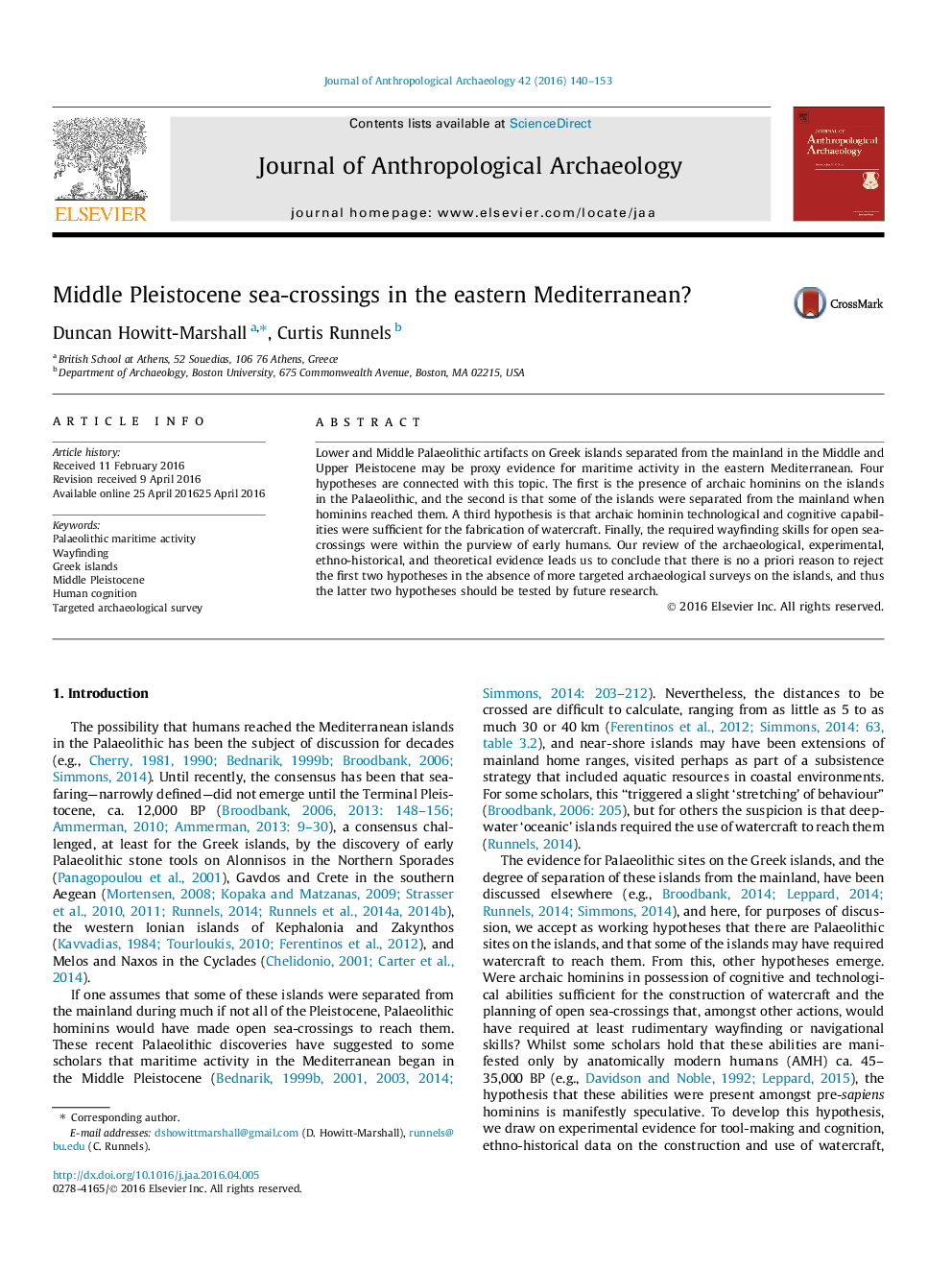| Article ID | Journal | Published Year | Pages | File Type |
|---|---|---|---|---|
| 1034864 | Journal of Anthropological Archaeology | 2016 | 14 Pages |
•Coastal environments were important loci for human evolution and adaptation.•Archaic hominins reached the Greek islands in the Middle Pleistocene by watercraft.•We argue that they had the cognitive abilities and curiosity to cross open seas.•We report that basic wayfinding skills were necessary to cross open seas.•Targeted surveys of Mediterranean islands are required to test this hypothesis.
Lower and Middle Palaeolithic artifacts on Greek islands separated from the mainland in the Middle and Upper Pleistocene may be proxy evidence for maritime activity in the eastern Mediterranean. Four hypotheses are connected with this topic. The first is the presence of archaic hominins on the islands in the Palaeolithic, and the second is that some of the islands were separated from the mainland when hominins reached them. A third hypothesis is that archaic hominin technological and cognitive capabilities were sufficient for the fabrication of watercraft. Finally, the required wayfinding skills for open sea-crossings were within the purview of early humans. Our review of the archaeological, experimental, ethno-historical, and theoretical evidence leads us to conclude that there is no a priori reason to reject the first two hypotheses in the absence of more targeted archaeological surveys on the islands, and thus the latter two hypotheses should be tested by future research.
